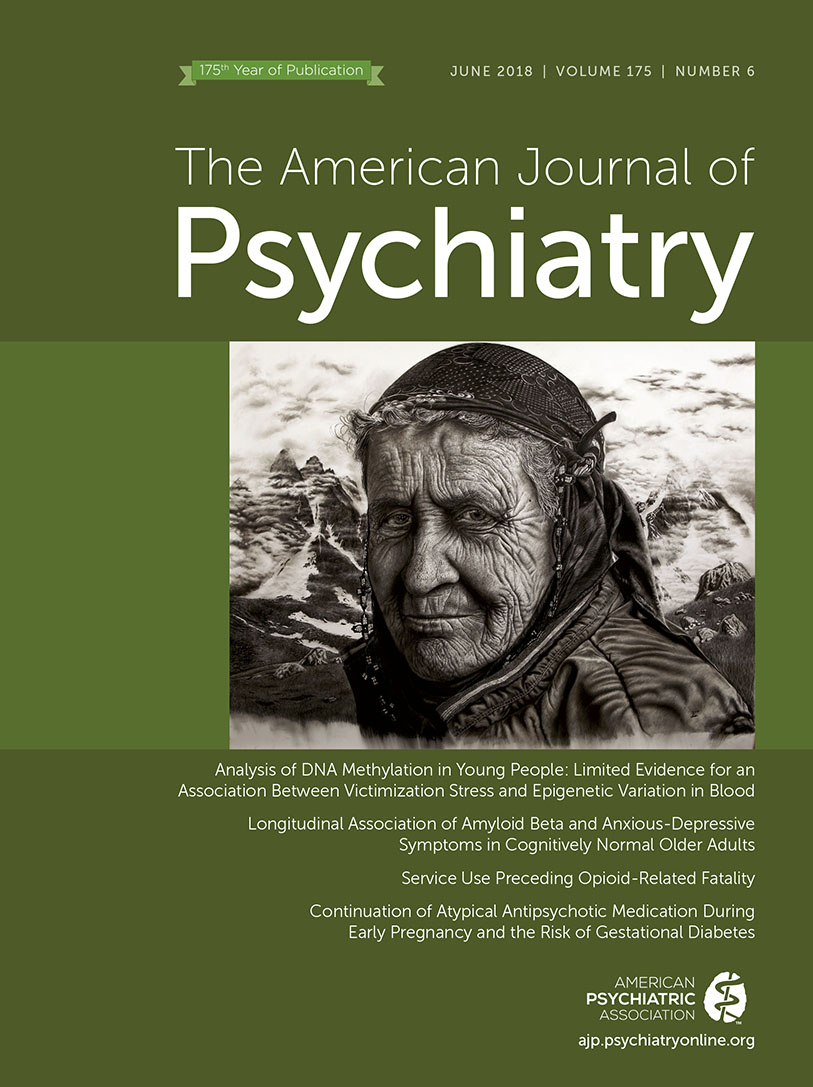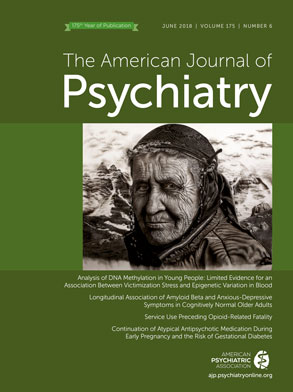Association Between Adversity and Major Depression
Adversity was significantly associated with major depression, confirming previous analyses (
46,
47). Individuals in the depression group experienced significantly more life events than did those in the control group (p=2.66×10
−81) (see Figure S1 and Table S1 in the
online data supplement). Childhood sexual abuse was significantly associated with major depression (10.3% case subjects compared with 2.5% control subjects; odds ratio=2.98, p=2.6×10
−19), with effects increasing with greater abuse severity (see Figure S2 in the
data supplement). Together, stressful life events and childhood sexual abuse accounted for 11.6% of the phenotypic variance in major depression. Twenty-seven percent of the sample (1,646 case subjects, 982 control subjects) was adversity exposed, and 73% (3,139 case subjects, 3,832 control subjects) was not. Table S2 in the
data supplement lists rates of key clinical features by adversity exposure. Adversity-exposed individuals endorsed higher levels of neuroticism and younger age at onset and were more likely to have comorbid dysthymia and anxiety disorders.
Genome-Wide Association of Major Depression in Groups With and Without Adversity
Figure 1 shows Manhattan plots for the GWAS of major depression in CONVERGE participants for whom complete information on adversity was available (N=9,599), those who reported adversity (N=2,628), and those without adversity (N=6,971). The genomic control factors (λ) were 1.047, 1, and 1.047, respectively; the adjusted measures to that of 1,000 cases and 1,000 controls (λ
1000) were 1.01, 1, and 1.014, respectively (see Figure S3 in the
data supplement).
In the adversity-exposed subset (
Figure 1B), no locus exceeded p<5.0×10
−8. In the subset without adversity, neither of the two previously reported loci on chromosome 10 exceeded p<5.0×10
−8 (rs12415800, p=3.2×10
−6; rs35936514, p=8.7×10
−5), likely because of reduced power, as odds ratios were not significantly different from the full cohort odds ratios (see Figure S6 and Table S10 in the
data supplement). However, three novel loci were detected (
Table 1,
Figure 1C): on chromosome 1 near
LPGAT1 (lysophosphatidylglycerol acyltransferase 1) (rs7526682, chr1:211973950, MAF=13.3%, p=3.0×10
−8, odds ratio=1.31) (
Figure 2A); on chromosome 1 in
C1ORF95 (rs11577545, chr1:226799083, MAF=21.5%, p=3.1×10
−8, odds ratio=1.25) (
Figure 2B); and on chromosome 8 at the 3′ end of
SLC25A37 (Mitoferrin-1) (rs950893, chr8:23450510, MAF=28.0%, p=6.9×10
−9, odds ratio=0.79) (
Figure 2C).
Comparison of these newly identified loci with the Psychiatric Genomics Consortium mega-analysis of European studies (
11) revealed an association between rs950893 on chromosome 8 and major depression (p=0.009), in the same direction as observed in CONVERGE. In contrast, the chromosome 1 loci (rs7526682, rs11577545) were not associated in the Psychiatric Genomics Consortium study (p=0.37, p=0.81), although results were in the same direction (see Figure S4 in the
data supplement).
We performed four further analyses on the three newly identified SNPs in the unexposed group. First, to determine whether the results were due to stochastic effects, we randomly removed samples equal in size to the adversity-exposed group 10,000 times and obtained empirical distributions of odds ratios at these SNPs for major depression (see the Methods section in the data supplement). Our results were unlikely to have arisen by chance, as all SNPs showed significant deviation in odds ratio from the full cohort (rs7526682, 99.9th percentile of the empirical distribution of odds ratios; rs11577545, 100th percentile; rs950893, 0.2th percentile) (see Figure S5 in the data supplement). In comparison, the two previously reported SNPs on chromosome 10 (rs12415800, rs35936514) were not significant (see Figure S6 in the data supplement).
Second, we tested for statistical interaction between adversity and the minor allele at each locus and compared findings to results including adversity as a covariate. For the two previously reported SNPs (rs12415800, rs35936514), the interaction terms were not significant. The three newly identified SNPs, however, all had significant multiplicative and additive interaction terms (
Table 2; see also Table S3 and Figure S7 in the
data supplement).
Third, we investigated differences in variant effects in the adversity-exposed and unexposed groups using random-effect meta-analysis. Table S4 in the data supplement shows significant effect size heterogeneity at the three new loci (Q-tests: rs7526682, p=3.13×10−4; rs11577545, p=9.42×10−6; rs950893, p=1.82×10−4) and significant random-effect tests for heterogeneity (p=1.02×10−7, p=1.07×10−7, and p=2.34×10−8, respectively). This method detected significant heterogeneity of SNP effects across the adversity exposure groups for the three newly identified loci. Major depression case–only and control-only association of adversity also demonstrated effect size differences at these variants (see Table S8 in the data supplement).
Fourth, we performed simulations to determine whether the difference in the estimated SNP effects between the adversity-exposed and unexposed groups implicates heterogeneity. The average logistic regression results for scenario A (no heterogeneity) are displayed in the left panel of
Table 3. Three results are noteworthy. First, in model 4 (analyzing adversity groups separately), the p values are orders of magnitude less significant than in model 1 (adversity ignored) and model 2 (adversity as covariate). Second, as no heterogeneity is simulated, the p value difference between the two groups in model 4 must only reflect power differences, not heterogeneity. Crucially, this shows that disparate p values between groups alone do not indicate heterogeneity. Third, the G×E interaction test in model 3 is well calibrated and shows no evidence of (false) inflation. These features of homogeneous SNP effects are all evident for both loci on chromosome 10.
Next, we modified the baseline simulation by making the SNP causal only in the adversity-unexposed group (scenario B) and performed the same tests (
Table 3, right panel). The presence of heterogeneity induces three novel features: the genetic effect sizes for each group estimated in model 4 are now different; the unexposed group test in model 4 is more powerful than the test in model 1 (ignoring adversity), despite an attendant reduction in sample size; and the G×E interaction test in model 3 is statistically significant. These simulation results all distinguish the loci on chromosomes 1 and 8 from those on chromosome 10.
The Genetic Basis for Major Depression in Adversity-Exposed and Unexposed Groups May Differ
To determine the presence of heterogeneity on aggregate genetic effects, estimates of the additive SNP contribution (h2snp) on the liability scale, after correction for sample ascertainment, were compared between adversity-exposed and unexposed depressive subgroups. Without etiologic heterogeneity, h2snp in subgroups should be similar to that in the entire sample. However, given genetic heterogeneity, h2snp may be larger in both subgroups than in the entire sample.
Although the h
2snp estimate of major depression in the adversity unexposed group (h
2snp=38.0%, SE=4.8%, p=1.11×10
−16) was higher than in the exposed group (h
2snp=34.2%, SE=15.9%, p=0.013) and the overall combined major depression sample (h
2snp=30.5%, SE=3.7%, p<10
−16), they were not statistically different. Because differences in h
2snp estimation methods may affect estimates and their interpretations (
44,
45,
48,
49), we accounted for LD in dense, imputed data using LDAK (
44) and assessed underestimation from restricted maximum likelihood using PCGC. These results were consistent with results from GCTA (see Table S5 in the
data supplement).
Second, the proportions of variance in major depression due to aggregate additive G×E interaction between adversity and all GRM SNPs, CONVERGE-trained polygenic risk score, and Psychiatric Genomics Consortium polygenic risk scores were estimated. The interaction component for the GRM-by-adversity term was significant (p=0.038), with the proportion of variance attributable to additive genetic (h2snp) and G×E interaction components estimated at 23.3% (SE=5.8%) and 13.2% (SE=7.4%), respectively. However, none of the polygenic risk score-by-adversity interactions were significant (see Table S6 in the data supplement), perhaps because of limitations of a polygenic risk score–based approach (see the Methods section in the data supplement).
Third, the genetic correlation of major depression between the adversity-exposed and unexposed groups was estimated at +0.64 (SE=0.23). While less than unity, this is known so imprecisely that it is not significantly different from 1 (95% CI=0.19, 1.0).
Finally, we consider which models of genetic architecture are consistent with observed trends. The resulting h2snp estimates from the overall cohort with and without adversity exposure are shown in Figure S9 in the data supplement. The two within-cohort heritabilities, along with genetic correlation and G×E estimates, are shown in Figure S10 in the data supplement. The results confirm our prior intuition: without heterogeneity, within-group heritabilities coincide with the overall average heritability, although the reduced sample sizes induce larger variance in the within-group estimators; however, as heterogeneity increases (or causal variant sharing decreases) the overall heritability decreases while the within-cohort heritabilities remain constant.



